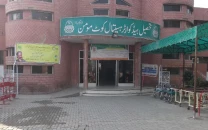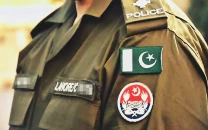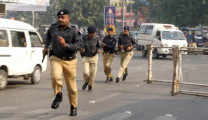Ancient seals intrigue researchers
The items made of bronze and clay were recovered during excavations at Harappa and Mohenjo-Daro

The Lahore Museum contains many seals found during excavations from the world's oldest Indus Valley Civilisation.
The text written on the seals has not been read despite extensive efforts. These seals, made of bronze and clay, were recovered during excavations at Harappa and Mohenjo-Daro.
There are pieces of evidence that these seals were used as a means of trade, identification of tribes and personalities, and as currency.
It is said that museums serve as a window to peek into ancient civilisations. The Lahore Museum contains remnants of many civilisations and artifacts associated with the region.
The bronze and clay seals in the gallery of the Lahore Museum are related to the earliest civilisation of the Indus Valley.
These seals have pictures of different animals, symbols and letters written on them.
A researcher at the Lahore Museum, Aliza Saba Rizvi, who is in-charge of the Indus Gallery, said more than 100 archaeologists have done their research so far but they have not been able to read the inscriptions, shapes and symbols written on the seals correctly.
She maintained that usually these seals were made of a special type of stone, burnt clay and bronze.
“The Lahore Museum has nine bronze seals while the number of clay and stone seals is 64,” she said.
Reportedly, these seals depict a variety of animals with a unique Indus Valley script.
A large number of them have a picture of a horned bull-like animal known as the Unicorn.
There are also pictures of small horned bulls, elephants, deer, crocodiles, rhinos and tigers. These seals have been sent to many countries of the world to find out the secret of what the writings and signs on these seals convey but so far these writings have not been properly interpreted.
There are also symbols on seals that are considered precious in many religions and cultures.
Rizvi continued that there is evidence that these seals are used as a symbol of trade identity, tribe and personality and as a currency.
“The bronze seals have a face on one side and letters on the other that could not be read,” said the researcher.
She added that a lot of work has been done in India to read and learn the script of the Indus Valley Civilisation.
She highlighted that many ancient languages were spoken in India.
“Indian experts believe that the Indus Valley script may be similar to the ancient Indian languages,” said the researcher.
So far, she maintained, 22 alphabets of this incomprehensible language have come to light. According to experts, the ancient writings of India and the pyramids of Egypt have been read.
“However, the inscriptions on these seals from 3300 to 1700 BC are still a mystery to the world,” Rizvi remarked.
Experts hope that one day an archaeologist from the same region will be able to read these writings and help learn about the ancient civilisation.
Published in The Express Tribune, August 10th, 2020.



















COMMENTS
Comments are moderated and generally will be posted if they are on-topic and not abusive.
For more information, please see our Comments FAQ